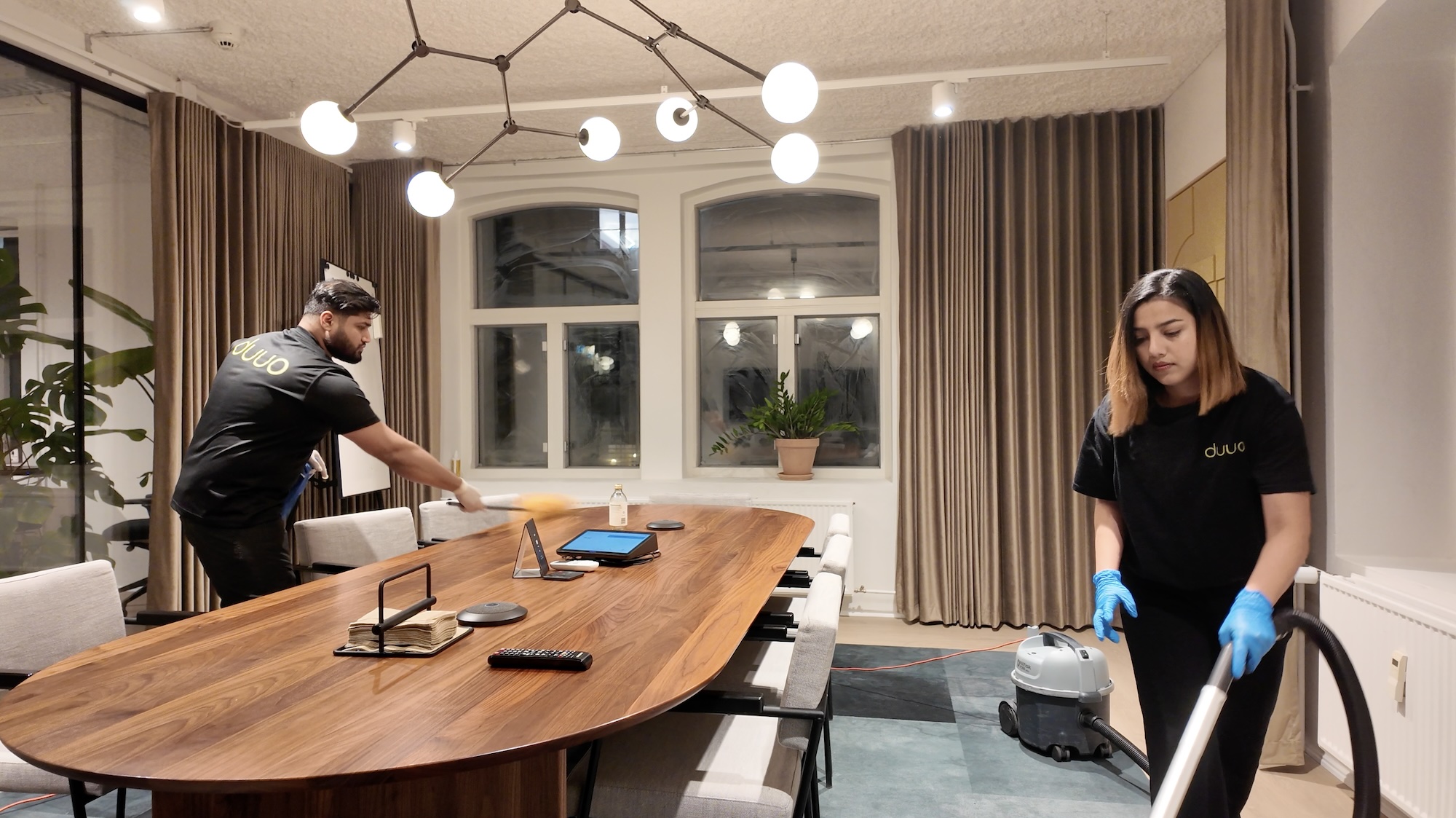11.30.2022
Noise in the office

Noise in the office
Noise in the office comes in many forms and can be difficult to reduce. But what is noise and how do we minimize it?
Don’t you worry, we have your back! In this article we will help you fight the office noise, maintain a healthy and productive work environment while avoiding clashes with your colleagues.
How does office noise affect productivity?
According to A British Journal of Psychology study, 1998,office noise is a productivity killer.
It may sound banal, but did you know that by being exposed to a nearby conversation, employees can be up to 66% less productive.
A calm and non-disturbing work environment is obviously preferred to enhance focus, productivity, and wellbeing at the office. It will result in happy employees, healthy relationships among them thus increasing employee retention rate.
The U.S. Environmental Protection Agency (EPA) and the World Health Organization (WHO) recommend maintaining environmental noises below 70 dBA over 24-hours (75 dBA over 8-hours) to prevent noise-induced hearing loss.
But how do you really know if there is too much noise? It can be difficult to grasp how much 70 db. is to an everyday office employee. To help you understand different levels of noise and to put the sound levels into relief, the following illustration may help you:

When all this is said, it’s important to also mention, that different people react differently to noise. Some people are more sensitive than others, making them irritated and disturbed more quickly.
But also on a physical level, pain and hearing injuries may occur at different db. levels and on different frequencies. In worst-case scenarios all it takes is one very high sound level (most likely above 130 db.) and it can permanently affect one’s hearing.
And we certainly don’t want that, so what is next?
How to reduce office noise?
Noise can be controlled and reduced but never to an absolute zero db. In the office, there will usually be footsteps, doors closing, keyboard typing and other sounds that may disrupt your concentration.
No matter how often, you will most likely never get used to a door being slammed. However, we can work on the surrounding to minimize noises.
So, in the following we introduce 7 steps that can help you in your quest to control and reduce noise at the office. Hopefully this will make you happy, motivated, and even more productive – your boss will love you for it!
Step 1. Define your office:
Before you invest any efforts and money on changing the physical structure of your office space, lets figure out a few things relating to your office and company. Here are some of the questions you can ask to yourself:
- Is your office open or closed? (Walls or no walls?)
- What type of walls (wooden, concrete, gypsum)?
- Lots of different cultures? (Cultures equals differences, which also applies to work and noise culture)
- How many employees per square meter?
- What type of company and industry?
Comparatively, closed offices are quieter than open offices.
There are walls to close off areas/departments, several rooms with walls that act as barriers and helps to absorb noise. However, in open offices, the sound is moving around freely.
Imagine you work in a call center with 100 fellow phoners in a 200 sqm of office space, having colleagues answering calls every 2 seconds. The sound now affects not only yourself and employees, but also the persons in the other end of the line – the customer – that may be disturbed by the surrounding noise.
This hampers the healthy conversation and the customers’ experience.
Step 2: Add interior to your office
As mentioned, most objects act as a barrier to absorb or bounce sound waves, but some materials absorb better than others. If your office walls are empty, you can add materials like posters or paintings which will help absorb sound instead of reflecting it.
Don´t leave your floor naked! Add carpets and dense rugs to the floor.
In comparison to any other flooring materials, carpets can absorb 10 times more noise. Add thick long coverage curtains on windows and glass meeting rooms or even add blinds. This will help with more than just the sound 😊
Lastly, remember to add plants and furniture of your choice- the more the merrier.
Not satisfied with the tips above? Read on, we have more for you!
Hvad er PhoneAlone?
PhoneAlone er en dansk familieejet virksomhed, der med frontløberne Kim Siefert og Joakim Siefert, er gået forrest for at skabe rum for medarbejderes trivsel og performance på deres danske kontorer. Resultatet af denne passion er fleksible, private rum, hvor medarbejdere kan fordybe sig, få rum til kreativitet samt uforstyrrede, fortrolige samtaler. Det skaber glade medarbejdere, der performer bedre, hvilket i sidste ende gavner hele virksomheden – medarbejdere som ejere.
PhoneAlone har 3 forskellige bokse, der alle kan customies og styles til den givne virksomhed. Og til de virksomheder, der virkelig ser fordelen i hygiejne og rengøring, kan der tilvælges automatisk desinficering vha. en højteknologisk UV-løsning, som eliminerer alle bakterier og vira. Nysgerrig på PhoneAlone?
Besøg PhoneAlone here og bliv klogere på deres løsninger.
Step 3: Add soundproofing materials
It’s quite popular to add more density to the walls and ceiling with soundproofing materials such as soundproofing boards. This could be a drywall with added mass loaded vinyl, or it could be dense sound-blocking foam.
Especially soundproofing boards often go well with most interior and therefore shouldn’t cause too much harm to your overall interior design – making sure you won’t get in trouble with any colleagues interested in design!
But do have in mind, that the larger the office, the more areas to cover and soundproof. So obviously, you will need materials in larger quantity and people to set it up. But here’s the good news; if you don’t have the resources or the willingness to do it yourself, our handy department can help you.







